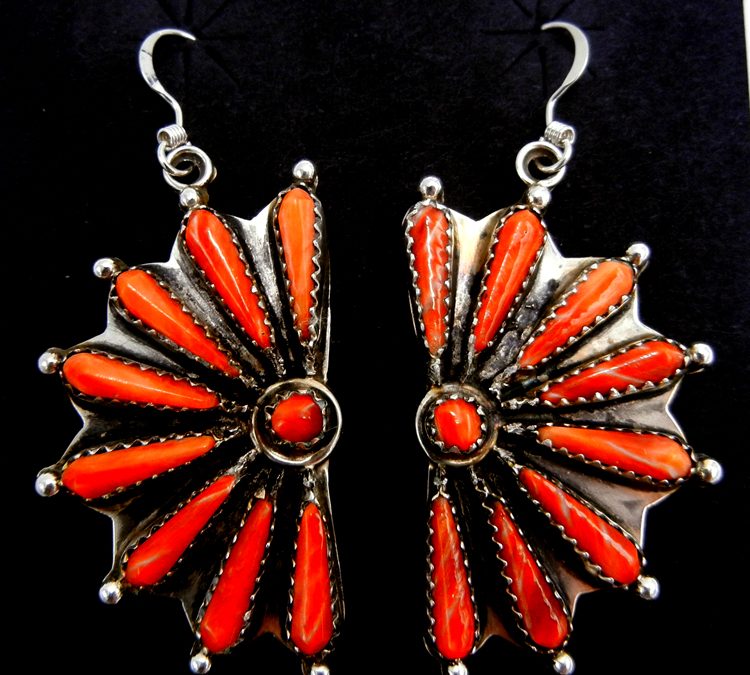Perhaps one of the most well-known Native American communities by name in the United States, the Navajo People have a history and culture that is fascinating and not as widely known in great detail. While many might associate Navajo culture with the beautiful and popular turquoise Navajo jewelry, learning more about the history and society that surrounds these beautiful pieces of jewelry will only help to appreciate their origins further.
The Navajo People
With a population of over 300,000 individuals, the Navajo is actually the largest federally recognized tribe in the United States and is situated on a reservation in the southwestern U.S. that is the size of West Virginia. The traditional territories of the Navajo span across what is modern-day New Mexico, Arizona, Utah, and Colorado, and encompass beautiful scenic desert, mesas, and forest landscapes. The title for the Navajo people in their language is actually “Diné” which translates to “people.”
Navajo History
Anthropologists believe that the Navajo People are descended from the Athabaskan First Nations who resided in Western Canada over 1,000 years ago and migrated south along the Pacific coastline. Following this migration, groups split off to settle in what is now the southwestern United States, including communities that became the Navajo and Apache People. After this settlement, there continued to be a wealth of knowledge and cultural exchange between the two closely related tribes, along with a great deal of exchange with the Pueblo Native Americans such as the Hopi when it came to desert agriculture and arts and crafts techniques.
After the colonizing of the traditional Navajo territories in the 17th and 18th centuries, the Navajo were forced out of much of their land in 1864 by gunpoint to reside in an internment camp at Fort Sumner in New Mexico. This forced migration was referred to as “The Long Walk,” and the Navajo People were imprisoned in this camp for 4 years until they were allowed to return to their lands. The tension between the Navajo People and the settler government continued after this point, however in the 1920s oil was discovered in Navajo territory, boosting the Navajo economy and supporting the rebuilding of some of the tribal structures that had been previously suppressed by the European settlers.
Traditional Navajo Textiles
The weaving traditions of the Navajo People are what most commonly think of when it comes to Native American textiles. Historically, weaving is done through the usage of a two-bar vertical loom which is relatively simple in form but has the ability to create stunning pieces. For example, the traditional “Chief’s blankets” created by the Navajo People are still widely popular to this day and sport intricate and beautiful colors and patterns.
When it comes to clothing, men would traditionally wear loincloths made from animal fur or skins, or even woven cloth. Women would also often wear woven skirts, however, the materials used for these pieces were actually most often the fibers of a yucca plant which is a plant indigenous to the arid deserts of the surrounding landscape. Traditionally, animal skins were also used to create moccasins and ponchos for both men and women.
Navajo Buildings
While many might instantly think of teepees as the traditional shelters for Native Americans in the United States, the Navajo People actually built hogans for their dwellings. Hogans were log dwellings with mud or clay roofs constructed in the shape of an octagon and were slightly varied in structure depending on the season. During the summertime, the structures were often open along an entire wall, however, closed structures provided shelter and storage for the winter. Despite these structures, however much of the day-to-day life of the Navajo People was spent outside. In Navajo tradition, if a death occurred inside one of these structures they were burnt to the ground.
Navajo Superstitions
The Navajo culture is also characterized by several fascinating superstitions which have been passed down through generations. These superstitions are thought to bring misfortune to those who break them and include things like never staring at the moon, refraining from pointing at rainbows, avoiding looking at fast-moving rivers or slow-moving clouds, and abstaining from throwing rocks into the wind. It’s also believed that whistling at night invites evil spirits to whistle back and that shapeshifters, also known as skinwalkers, have the ability to transform into animals and bring about harm.
Navajo Artistic Tradition
One of the most wildly known elements of Navajo artistry is their expert silversmithing tradition. Silversmithing was said to have been introduced to the Navajo from Mexican Indigenous populations, and silversmithing techniques were subsequently spread throughout many tribes in the southwestern United States. The Navajo People began to integrate silver work into their jewelry-making practice around the late 1800s. During this time period, the primary sources for silver were American coins and Mexican pesos. When it comes to Navajo jewelry, pieces are generally distinguished by the unique method of stamping on silver jewelry, a method which is rarely seen on Zuni jewelry or the jewelry of other tribes in the southwest. In the early 1900s, turquoise was also introduced into many Navajo jewelry designs.
Palms Trading Company Has the Navajo and Zuni Jewelry You Want
At Palms Trading Company, we take pride in the wide variety of beautiful and authentic Navajo jewelry pieces we have to offer. We work with local Indigenous artists to ensure that the history and beauty of each piece is preserved so that when it’s passed off into our clients’ hands, you will be able to take joy in having a beautiful piece of wearable art filled with a rich history and meaning. Get in touch with us today and let our knowledgeable staff help you find the perfect piece of Navajo jewelry!



